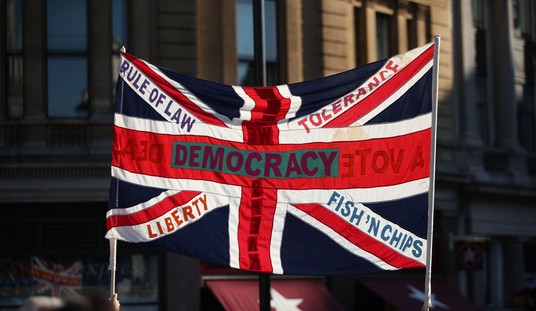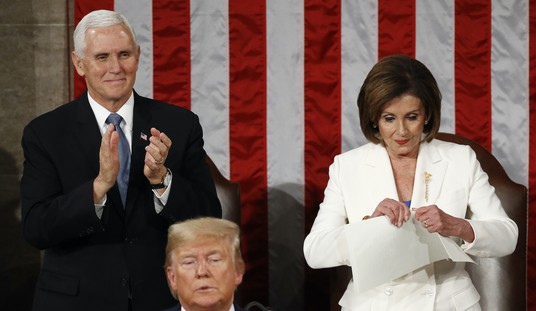The most-discussed “revelation” in No Easy Day: The Firsthand Account of the Mission that Killed Osama bin Laden, by former Navy SEAL “Mark Owen,” is certainly Osama bin Laden’s status as unarmed when he was shot twice in the head by an American operator in his Abbottabad house. Not only was the al Qaeda leader and terror mastermind not holding a weapon when he was killed, but his guns weren’t even loaded, despite more than ten minutes’ warning – after a hard landing by a Black Hawk helicopter and a firefight at the guest house – that his compound was under attack. After bin Laden was killed, Owen writes, the SEAL “took each weapon down and pulled out the magazine and checked the chambers. They were both empty. He hadn’t even prepared a defense. He had no intention of fighting.”
While interesting (and while a significant challenge to aspects of the Obama administration’s initial narrative, including that bin Laden used one of his wives as a human shield), there is another detail in No Easy Day that is interesting enough to warrant some additional questions and discussion: the infiltration route taken by the two MH-60s that carried the assault teams from Jalalabad, Afghanistan to Abbottabad, Pakistan.**

The fourteenth page of images in No Easy Day contains a map showing the routes taken by the two flights of helicopters: the Black Hawks taking the assaulters to Abbottabad, and the MH-47 Chinooks carrying a quick reaction force (QRF) and forward area refueling point (FARP) team. While the latter flew due east to a staging area northwest of Abbottabad, the former flight is shown on Owen’s map as crossing over Pakistan’s eastern border with India before looping around and approaching Abbottabad from the southeast, rather than approaching directly from the west (or west-northwest).
This apparent use of Indian airspace on the infiltration route raises some obvious questions, including:
- What foreknowledge (if any) did the Indian government have about the mission into Pakistan?
- If clearance to use Indian airspace was requested (and granted), what was the Indian government told, either about the real objective of Operation Neptune Spear or as a cover story?
- What other assistance did India provide, either in terms of aerial diversion or supplying the U.S. with guidance on the best route back into Pakistan? (It seems clear that the latter would involve providing the U.S. some insight into India’s intelligence and route planning for a possible strike on Pakistan should hostilities resume between the two states.)
It’s important to note at this point that this discussion is based on a single low-detail graphic (which you can see above, or in its entirety at this link) from an account that was neither vetted nor confirmed by the U.S. government. At no point in the text of No Easy Day is the route to Abbottabad discussed (as opposed to the return trip, which is dealt with in some detail); in fact, Owen writes, most of the team slept on the way in.
Owen’s map appears to define Pakistan’s eastern border as the western boundary of Kashmir, the disputed territory that is bisected into Pakistani- and Indian-administered territories by the Line of Control, established in 1972, and it is difficult to tell whether the image was intended to show that the helicopters’ route crossed the LOC. However, the route appears to take the Americans in the vicinity of Uri, in Indian territory.
It goes without saying that crossing over the LOC would have been an exceedingly dangerous undertaking, and one which, while crossing eastward, would almost certainly have required providing prior notice to the Indian government. Likewise, passing back across the LOC into Pakistan would have been a dangerous undertaking, as that is the direction in which Pakistan’s air defenses are largely oriented. This goes back to point 3 above: if the assaulters’ route to Abbottabad included crossing over the Indian border and back again, it seems likely that weaknesses in Pakistan’s eastward-oriented air defenses known to India were communicated to the U.S. and exploited on this mission.
It certainly isn’t beyond the realm of possibility that India, which has been called a “key ally in the fight against global terrorism,” would have provided such information and assistance to the US. India would seem to have a vested interest in helping America succeed at a mission like Neptune Spear, at very least due to the opportunity to embarrass the Pakistani military-intelligence complex while adding to the strain in the US-Pakistani relationship. Additionally, India has an interest in Afghanistan, having reached an agreement to provide training and equipment to Afghan security forces, assist in infrastructure development, and access the nation’s mineral and natural gas resources. Add to that reports that bin Laden was involved in the planning of the 2008 Mumbai massacre, and there is plenty
A May 2012 report on U.S.–Pakistani relations by the Congressional Research Service noted the following about Operation Neptune Spear’s effect on the Pakistani–Indian relationship:
The circumstances of OBL’s death were relevant to the course of relations between Pakistan and India. Indian Prime Minister Manmohan Singh called the killing “a significant step forward” and expressed hope that it would represent a decisive blow to AQ and other terrorist groups.
At the same time, however, New Delhi is concerned that the development is hastening a U.S. withdrawal from Afghanistan in ways that could be harmful to India’s foreign policy interests. New Delhi also saw the discovery of OBL in Pakistan as an opportunity to more energetically press its demands that Islamabad extradite the alleged perpetrators of the 2008 Mumbai terrorist attack, Lashkar-e-Taiba figures believed to be in Pakistan, as well as other most-wanted anti-India terrorists such as organized crime figure Dawood Ibrahim.
Did India see enough opportunity in Operation Neptune Spear that it provided access both to airspace and to sensitive intelligence on Pakistani air defenses and infiltration routes? One simple map in No Easy Day certainly raises some interesting questions about Indian involvement in the most famous raid of the war on terror, and while we may never know the answers for certain, they are certainly worth asking. After all, who knows whether the next unauthorized disclosure about the bin Laden raid might provide some answers about that very subject.
** A stipulation: Pakistani/Indian relations are not my foreign policy strong suit, so if there are errors, please let me know.












Join the conversation as a VIP Member